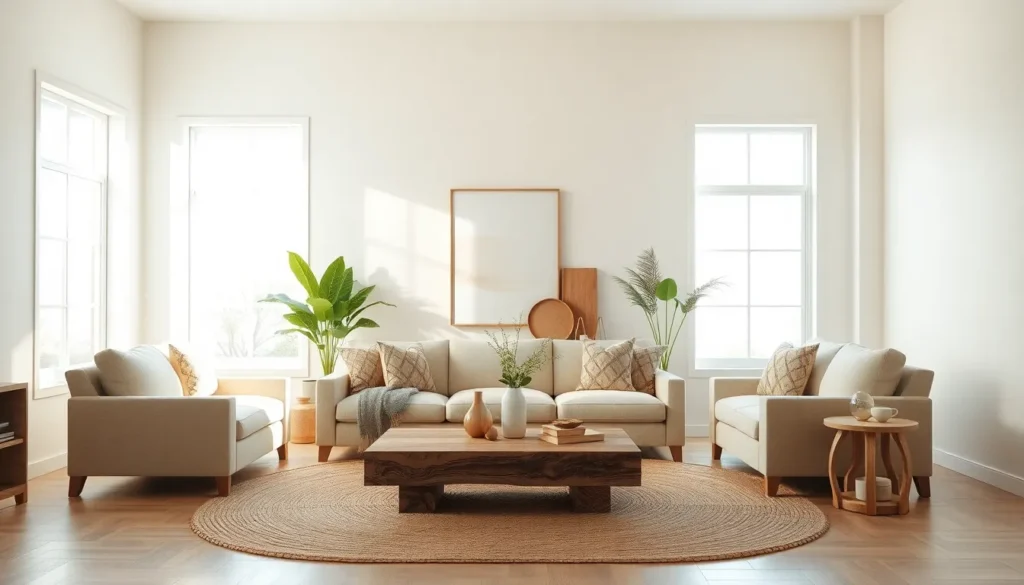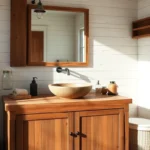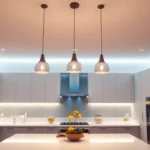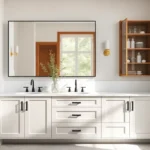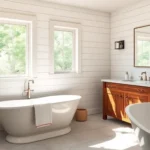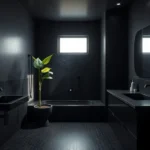Creating a stunning living room doesn’t require bold colors or dramatic statements. We’ve discovered that neutral living rooms offer the perfect foundation for timeless elegance and versatility that never goes out of style. These calming spaces provide endless opportunities to showcase your personal style while maintaining a sophisticated atmosphere that guests will admire.
Neutral palettes aren’t boring—they’re brilliantly strategic. We’ll show you how to layer different textures, tones, and materials to create depth and visual interest without overwhelming your space. From warm beiges and soft grays to crisp whites and earthy taupes, neutral colors create a serene backdrop that adapts to any season or mood.
Whether you’re starting from scratch or refreshing your current space, we’ve compiled the most effective neutral living room ideas that’ll transform your home into a peaceful retreat. Get ready to discover how these understated color schemes can make your living room feel both cozy and effortlessly chic.
Choose a Cohesive Neutral Color Palette
Building on the foundation of neutral elegance, we need to carefully select colors that work harmoniously together throughout our living space.
Start with Warm Whites and Creams
Warm whites serve as the perfect base for our neutral living room palette. We recommend choosing ivory, off white, or cream tones instead of stark white to create a welcoming atmosphere. These softer shades reflect light beautifully while maintaining the cozy feeling that makes a living room inviting.
Cream colors work exceptionally well on walls because they provide enough warmth to prevent the space from feeling cold or sterile. We’ve found that Benjamin Moore’s Cloud White and Sherwin Williams’ Creamy offer excellent starting points for this approach. Paint samples should be tested in different lighting conditions since warm whites can shift dramatically between natural and artificial light.
Consider using these lighter tones for larger surfaces like walls and ceilings to maximize their impact. We suggest incorporating cream colored furniture pieces such as sofas or armchairs to reinforce the palette without overwhelming the space.
Incorporate Soft Grays and Beiges
Soft grays add sophisticated depth to our neutral color scheme without competing with the warm base tones. We choose grays with undertones that complement our whites and creams, such as greige or warm gray options. These colors work beautifully for accent walls, window treatments, or larger furniture pieces.
Beige tones bridge the gap between our warm whites and deeper neutrals perfectly. We use sandy beige, linen, and oatmeal shades to create visual interest while maintaining the cohesive flow throughout the room. These colors appear naturally in materials like jute rugs, linen curtains, and upholstered furniture.
Balance becomes crucial when mixing grays and beiges in the same space. We recommend following the 60-30-10 rule where 60% of the room features our lightest neutral, 30% incorporates medium tones like soft gray or beige, and 10% includes our deepest neutral accents.
Add Depth with Taupe and Mushroom Tones
Taupe colors provide the richest layer in our neutral palette while remaining subtle and sophisticated. We use these deeper tones sparingly as accent colors through throw pillows, artwork frames, or decorative accessories. Taupe works particularly well in areas where we want to create visual weight without introducing bold colors.
Mushroom tones offer an earthy alternative that brings natural warmth to our neutral scheme. We incorporate these colors through wooden furniture pieces, woven baskets, or textured wall coverings. These organic hues connect our indoor space to nature while maintaining the serene quality of our neutral palette.
Strategic placement of these deeper neutrals creates focal points throughout the room. We position taupe and mushroom elements where the eye naturally lands, such as behind the sofa, around the fireplace, or in built in shelving displays to guide attention and create visual hierarchy.
Layer Different Textures for Visual Interest
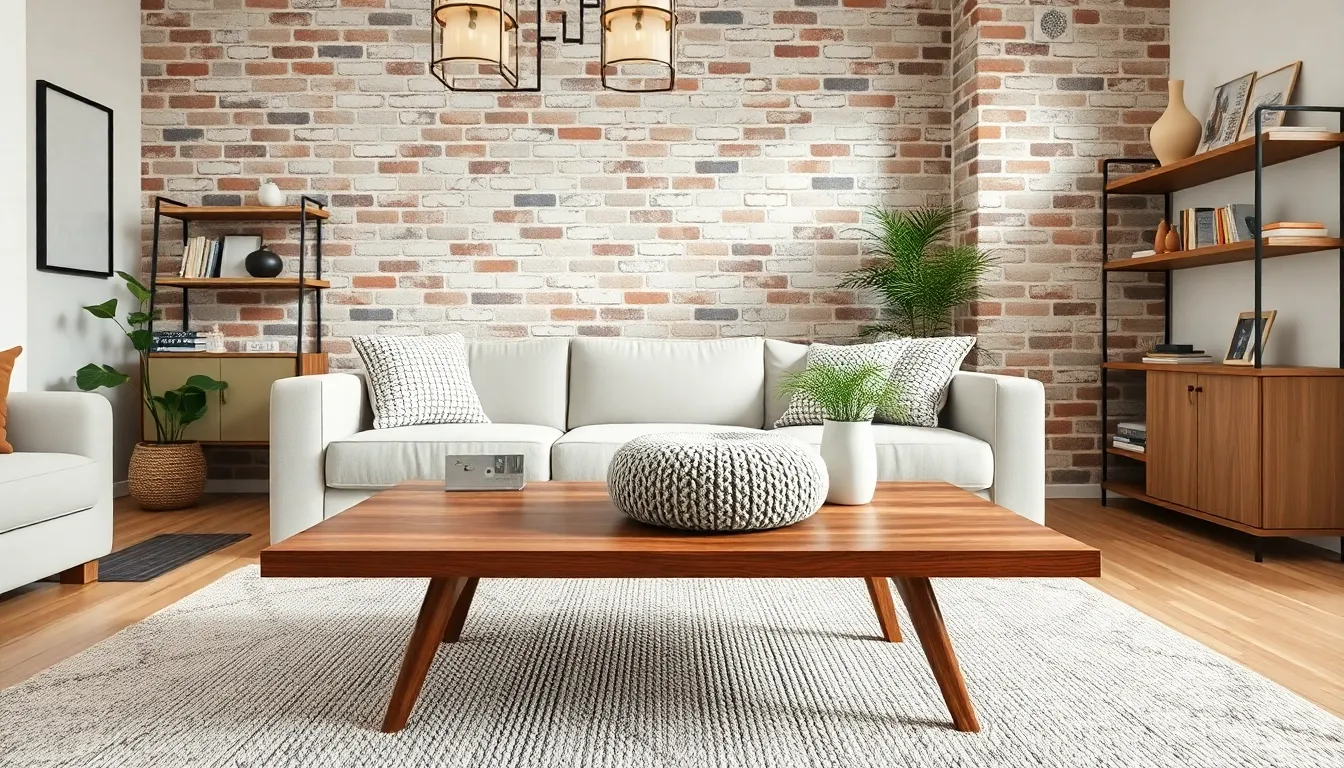
Texture layering transforms neutral living rooms from flat spaces into ever-changing environments that invite touch and visual exploration. We achieve this depth by strategically combining different material finishes that create contrast while maintaining our cohesive color palette.
Mix Smooth and Rough Surfaces
Smooth surfaces like polished wood coffee tables and glass accent pieces provide sleek foundations that reflect light beautifully throughout the space. We pair these with rougher textures such as exposed brick accent walls, natural stone side tables, or chunky knit throw pillows to create tactile contrast.
Textured area rugs anchor seating areas while adding warmth underfoot, especially when placed beneath smooth leather sofas or linen sectionals. We recommend incorporating woven baskets for storage that doubles as decorative elements, creating visual weight against smooth wall surfaces.
Stone fireplaces or brick feature walls serve as dramatic focal points that balance the refinement of glossy surfaces. These rough textures prevent neutral rooms from feeling too polished or sterile while adding architectural interest.
Combine Natural and Synthetic Materials
Natural materials like reclaimed wood floating shelves and wool area rugs bring organic warmth that softens the clean lines of synthetic elements. We layer these with modern synthetic pieces such as acrylic coffee tables or metal picture frames to create sophisticated contrast.
Linen curtain panels and jute rugs introduce natural fibers that complement sleek metal light fixtures and glass vases. Microfiber throw pillows offer durability and easy maintenance while maintaining the soft texture profile we’re building.
Wooden accent chairs paired with metal side tables create compelling material conversations that feel both grounded and contemporary. We use these combinations to establish zones within open floor plans while maintaining visual continuity.
Balance Matte and Glossy Finishes
Matte finishes on walls and large furniture pieces create calming backdrops that don’t compete for attention in neutral living spaces. We introduce glossy accents through lacquered console tables, metallic picture frames, or ceramic table lamps to add subtle sophistication.
Plaster walls with their naturally matte texture provide perfect canvases for glossy artwork or mirrors that reflect light at different angles. Unvarnished wood coffee tables ground the space while polished metal accessories catch and distribute natural light.
Satin finish fabrics on sofas and chairs offer a middle ground between matte and glossy that feels luxurious without being overwhelming. We use these balanced finishes to prevent neutral rooms from appearing flat while maintaining their serene atmosphere.
Select Neutral Furniture with Timeless Appeal
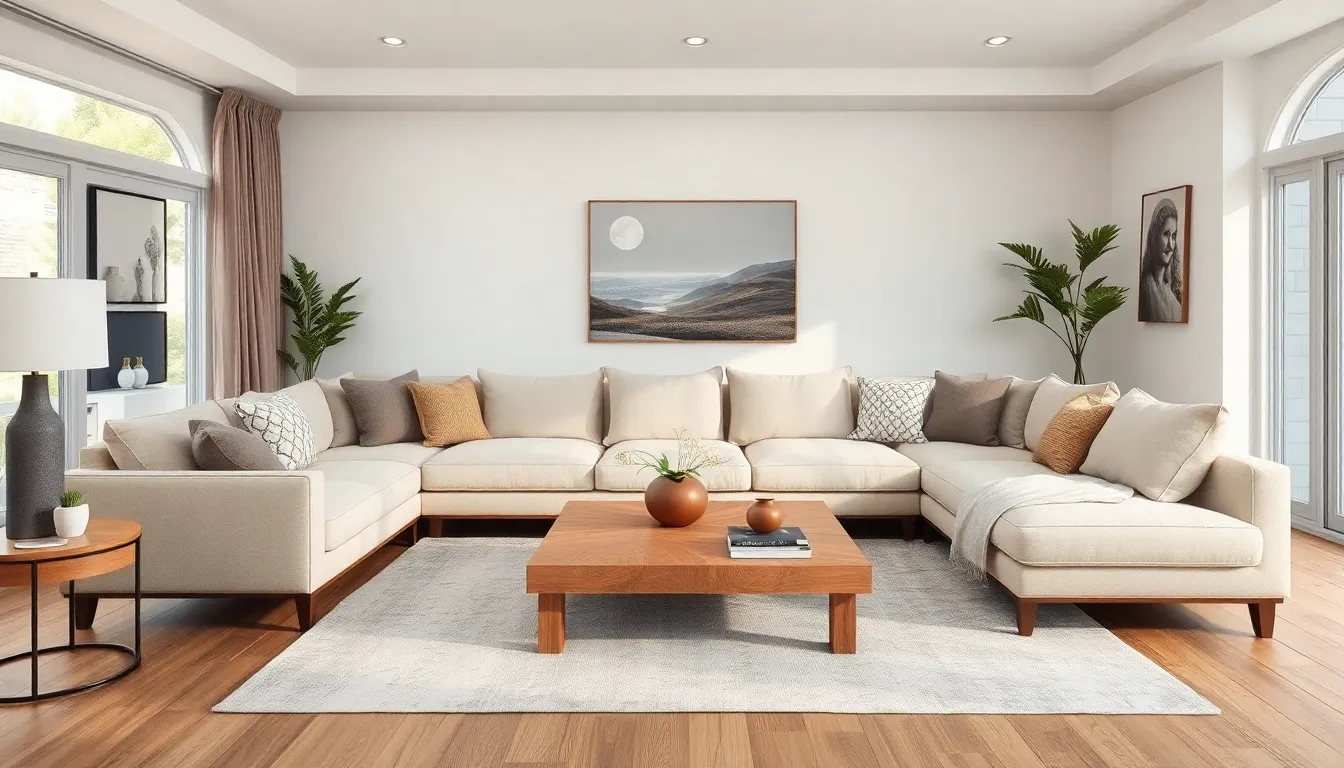
We’ve established the foundation of layered textures and cohesive color schemes, so now let’s focus on choosing the right neutral furniture pieces that’ll anchor your space for years to come.
Invest in Classic Sofa Shapes
Large sectional sofas in neutral colors serve as the perfect foundation for any neutral living room design. We recommend selecting pieces in beige, white, or gray to maintain that timeless appeal while providing maximum versatility for future style changes.
Materials like linen, polyester, and suede offer the soft and inviting texture your space needs to feel welcoming. Linen provides a relaxed, lived-in feel that ages beautifully, while polyester blends offer durability and easy maintenance for busy households.
Classic sofa shapes such as rolled-arm sectionals or clean-lined designs ensure your investment remains stylish regardless of changing trends. These silhouettes work equally well with traditional throw pillows or modern accent pieces, giving you complete decorating flexibility.
Choose Versatile Coffee Tables and Side Tables
Glass, metal, or wood materials add essential depth and versatility to your neutral living room space. Glass tables create an airy feel that prevents visual clutter, while metal frames introduce subtle industrial touches without overwhelming the serene atmosphere.
Wood coffee tables bring natural warmth that complements neutral upholstery beautifully. We suggest selecting pieces with clean lines and minimal ornamentation to maintain that timeless quality you’re seeking.
Versatile side tables in matching or complementary materials create cohesive flow throughout your seating area. Mix different heights and shapes to add visual interest while maintaining the neutral palette that ties everything together.
Opt for Natural Wood Finishes
Natural wood finishes in coffee tables, end tables, or sofa legs add warmth and depth that prevents neutral rooms from feeling sterile. These organic elements create perfect contrast against lighter upholstery and wall colors.
Different wood tones and species enhance visual interest without disrupting your neutral foundation. We recommend experimenting with combinations like warm oak paired with cooler ash tones, or rich walnut accents against lighter maple pieces.
Wood accents throughout your furniture selection create a cohesive natural thread that unifies your entire living room design. This approach ensures each piece feels intentional rather than randomly collected over time.
Add Warmth Through Natural Materials
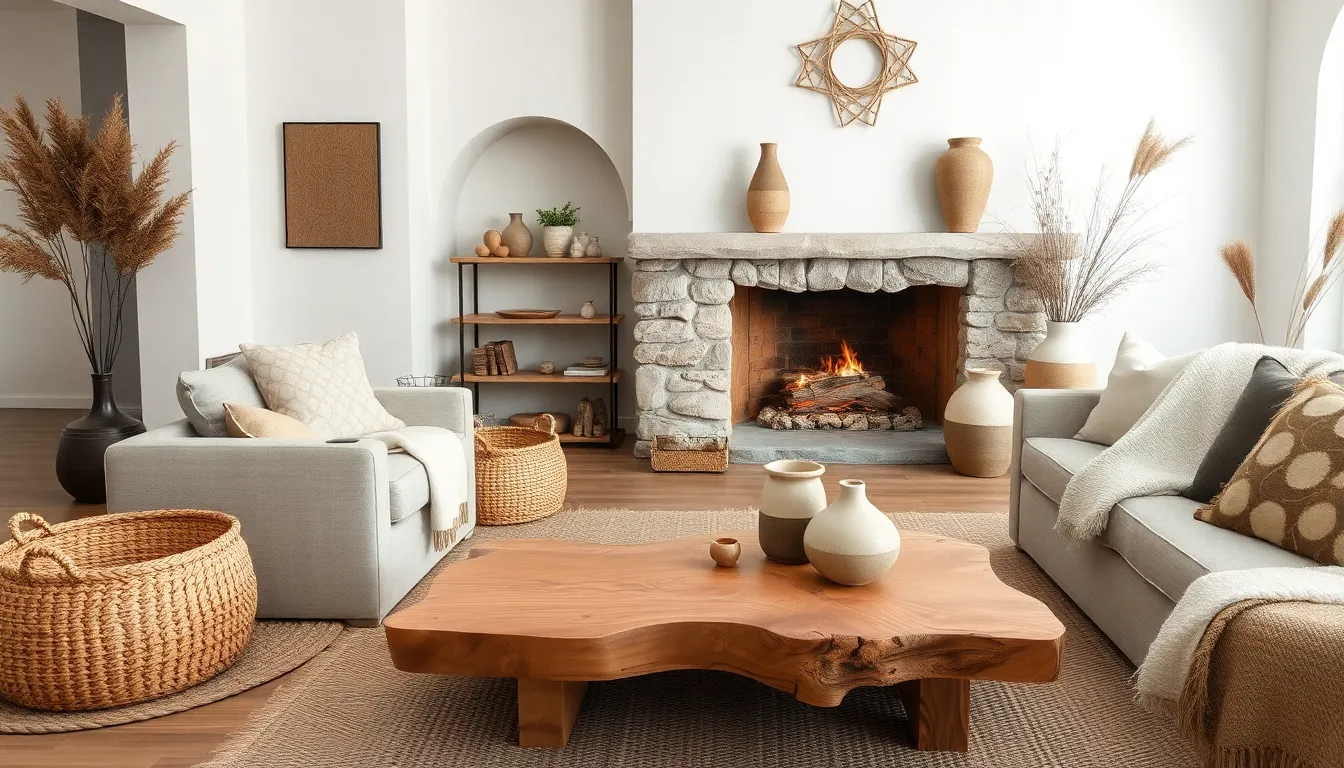
Natural materials transform neutral living rooms from sterile spaces into inviting retreats. We’ll explore how organic textures create cozy atmospheres while maintaining sophisticated appeal.
Incorporate Woven Baskets and Jute Rugs
Woven baskets serve dual purposes in our neutral living spaces, providing both storage answers and organic texture. Storage becomes stylish when we choose baskets made from natural fibers like seagrass or rattan. Placing these baskets near seating areas creates convenient spots for blankets, magazines, or remote controls while adding visual warmth.
Jute rugs anchor our neutral rooms with earthy textures that feel naturally inviting underfoot. These natural fiber rugs complement neutral color palettes perfectly, offering subtle variations in tone and texture. We recommend layering jute rugs under furniture groupings to define seating areas and add depth to hardwood or tile floors.
Use Wooden Accents and Live-Edge Pieces
Wooden elements introduce instant warmth through their natural grain patterns and rich tones. Live edge tables become stunning focal points that showcase wood’s organic beauty, creating conversation pieces that add character to neutral spaces. These natural wood pieces work especially well as coffee tables or console tables where their unique shapes can be fully appreciated.
Reclaimed wood shelves offer another way to incorporate wooden accents while adding functional storage. We find that mixing different wood tones creates visual interest without overwhelming neutral color schemes. Floating shelves made from weathered barn wood or driftwood provide perfect displays for books, plants, or decorative objects.
Include Stone and Ceramic Elements
Stone fireplaces create dramatic focal points that ground neutral living rooms with natural weight and texture. These permanent features add architectural interest while providing surfaces that contrast beautifully with soft furnishings. Natural stone materials like limestone or travertine offer subtle color variations that enhance neutral palettes.
Ceramic vases and pottery pieces introduce handcrafted elements that feel both timeless and contemporary. We suggest grouping ceramic pieces in varying heights and sizes to create ever-changing displays on coffee tables or mantels. These elements add visual depth through their matte finishes and organic shapes, complementing the overall neutral aesthetic while providing opportunities for seasonal styling changes.
Create Visual Depth with Layered Lighting
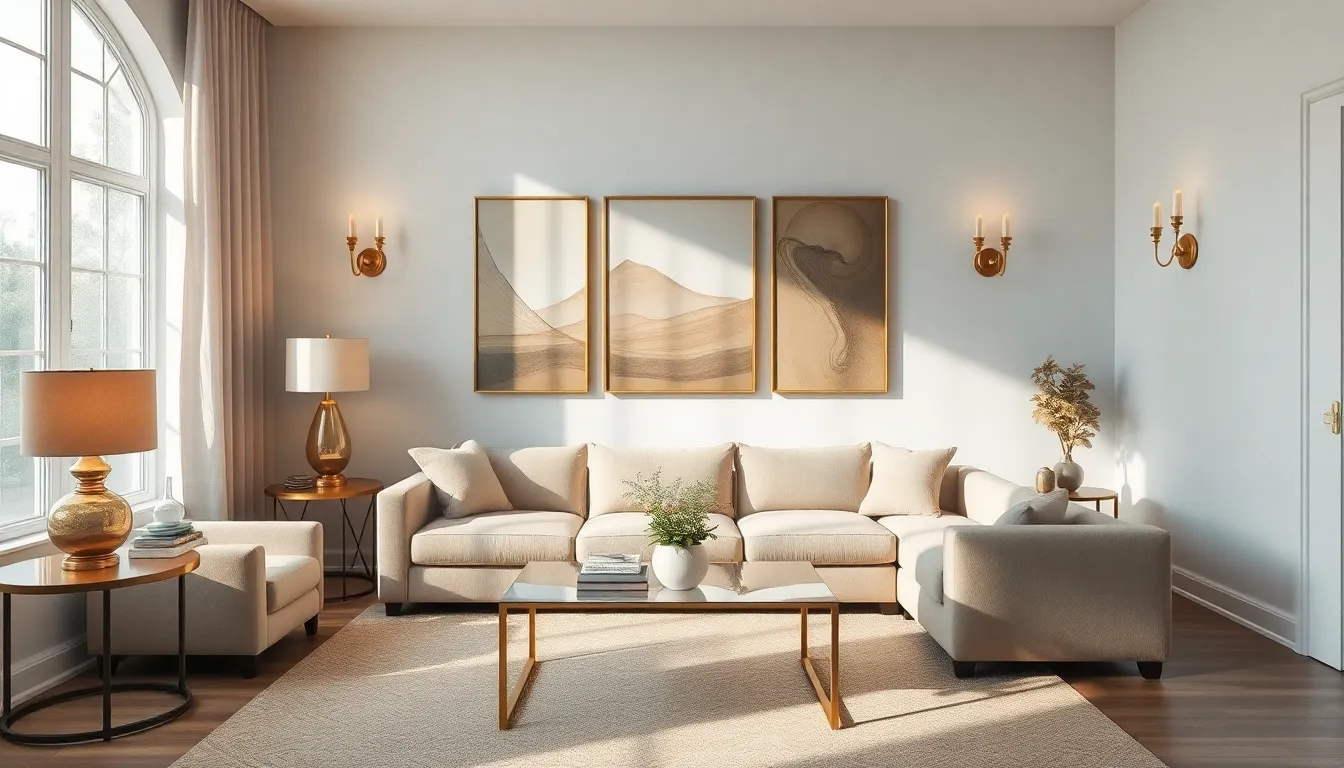
Lighting transforms neutral living rooms from flat spaces into ever-changing environments with rich visual depth. Strategic layering creates the sophisticated ambiance that makes neutral palettes truly shine.
Combine Ambient, Task, and Accent Lighting
Ambient lighting establishes the overall illumination foundation through ceiling fixtures like chandeliers, recessed lights, or pendant lamps. We recommend installing dimmer switches to control brightness levels throughout different times of day. Table lamps and floor lamps serve as task lighting, providing focused illumination for reading, working, or conversation areas.
Accent lighting highlights decorative elements and architectural features to create visual interest. Wall sconces illuminate artwork while picture lights draw attention to gallery walls. LED strip lights behind floating shelves or under cabinets add subtle drama. This three-layer approach ensures every corner receives appropriate illumination while preventing harsh shadows.
Use Natural Light as Your Foundation
Natural light maximizes the reflective qualities of neutral colors like white, beige, and gray to bounce illumination throughout the room. We suggest keeping windows unobstructed by heavy treatments or bulky furniture to allow maximum daylight penetration. Light-colored window treatments in linen or cotton filter harsh sunlight while maintaining brightness.
Reflective surfaces amplify natural light by strategically placing mirrors opposite windows or adjacent to light sources. Glass coffee tables, metallic accents, and glossy finishes help distribute daylight to darker corners. This foundation approach reduces dependence on artificial lighting during daytime hours.
Add Warm-Toned Light Fixtures
Warm-toned fixtures balance the cool undertones often found in gray and white neutral palettes. Bronze, brass, and copper finishes create cozy ambiance while adding metallic contrast to soft textures. We recommend choosing bulbs with 2700K to 3000K color temperatures for optimal warmth.
Brass table lamps complement beige and cream color schemes while bronze floor lamps enhance deeper neutrals like taupe and mushroom tones. Copper pendant lights above seating areas create intimate conversation zones. These warm metallic elements prevent neutral rooms from feeling sterile while maintaining the sophisticated aesthetic.
Introduce Subtle Patterns and Prints
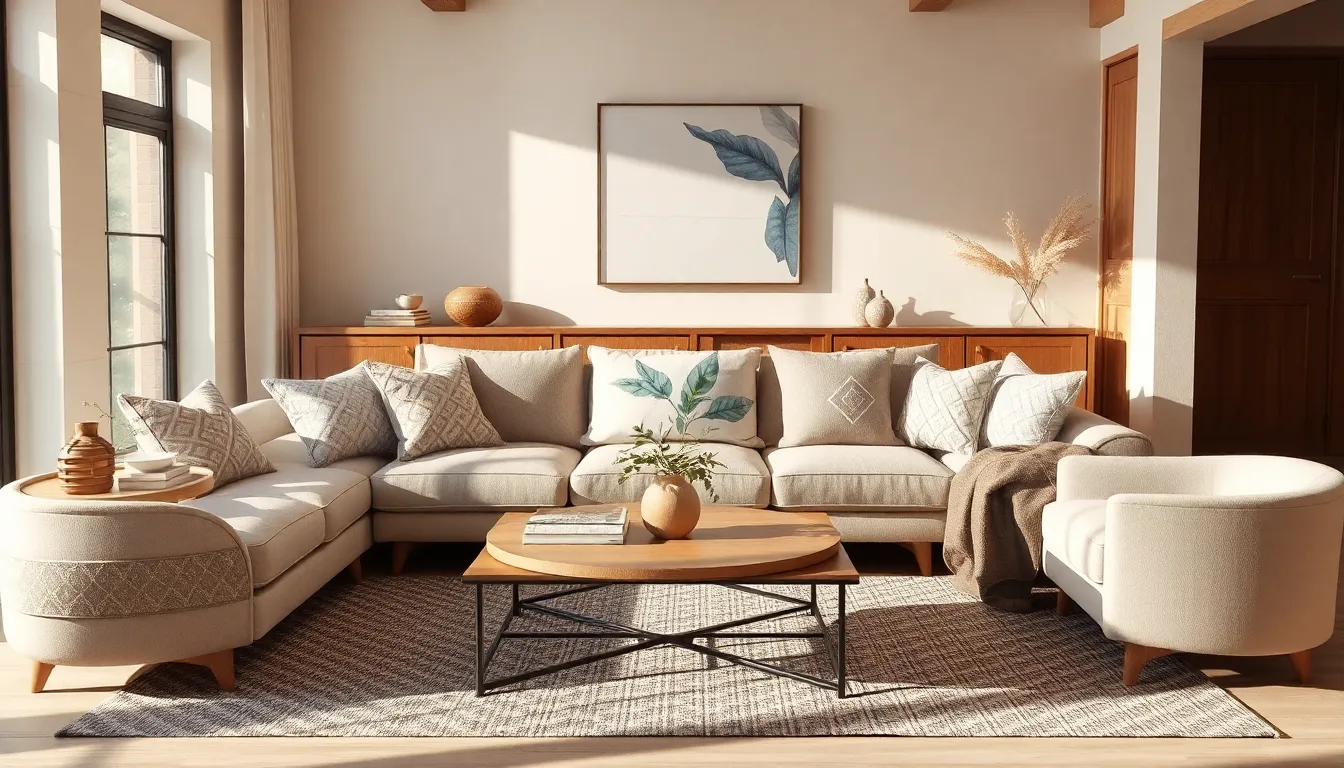
We can transform our neutral living rooms from static to sophisticated by incorporating carefully chosen patterns and prints. These design elements add visual interest while maintaining the calming atmosphere that makes neutral spaces so appealing.
Choose Geometric Patterns in Neutral Tones
Geometric patterns create modern sophistication when we select them in neutral shades like soft grays, warm beiges, and creamy whites. Classic checks, simple grids, and clean lines work exceptionally well in upholstery, wallpaper, or area rugs. These structured designs add energy to our living spaces through their repetitive shapes while maintaining the peaceful balance that neutral tones provide.
We can incorporate geometric elements through throw pillows featuring subtle diamond patterns or select an area rug with a minimalist grid design. The key lies in choosing patterns that complement rather than compete with our existing neutral palette, ensuring the geometric elements enhance our room’s tranquil atmosphere.
Add Organic Shapes and Nature-Inspired Motifs
Organic shapes bring a soft, natural touch that perfectly complements our neutral color schemes. Curved lines, gentle waves, and delicate leaf or branch motifs create visual movement without disrupting the serene environment we’ve established. These nature-inspired elements work beautifully in artwork, decorative objects, and textiles throughout our living spaces.
We can introduce organic patterns through botanical prints on curtains, curved sculptural elements on shelving, or abstract nature-inspired artwork above our seating areas. These flowing designs reinforce the relaxing atmosphere that characterizes neutral living rooms while adding gentle visual interest that feels both timeless and contemporary.
Layer Different Scale Patterns Together
Layering patterns of varying scales prevents monotony while adding dimensional depth to our neutral spaces. We can pair large-scale organic prints with small-scale geometric designs, creating visual harmony by staying within our neutral color family. This technique works particularly well when we incorporate different textures like wool, linen, or natural wood to further enrich our decor.
Successful pattern layering might include a large botanical print on our main seating area combined with smaller geometric patterns in throw pillows and a medium-scale stripe in our window treatments. The varying scales create visual rhythm while our consistent neutral palette ensures the combinations feel cohesive rather than chaotic.
Incorporate Living Elements for Freshness
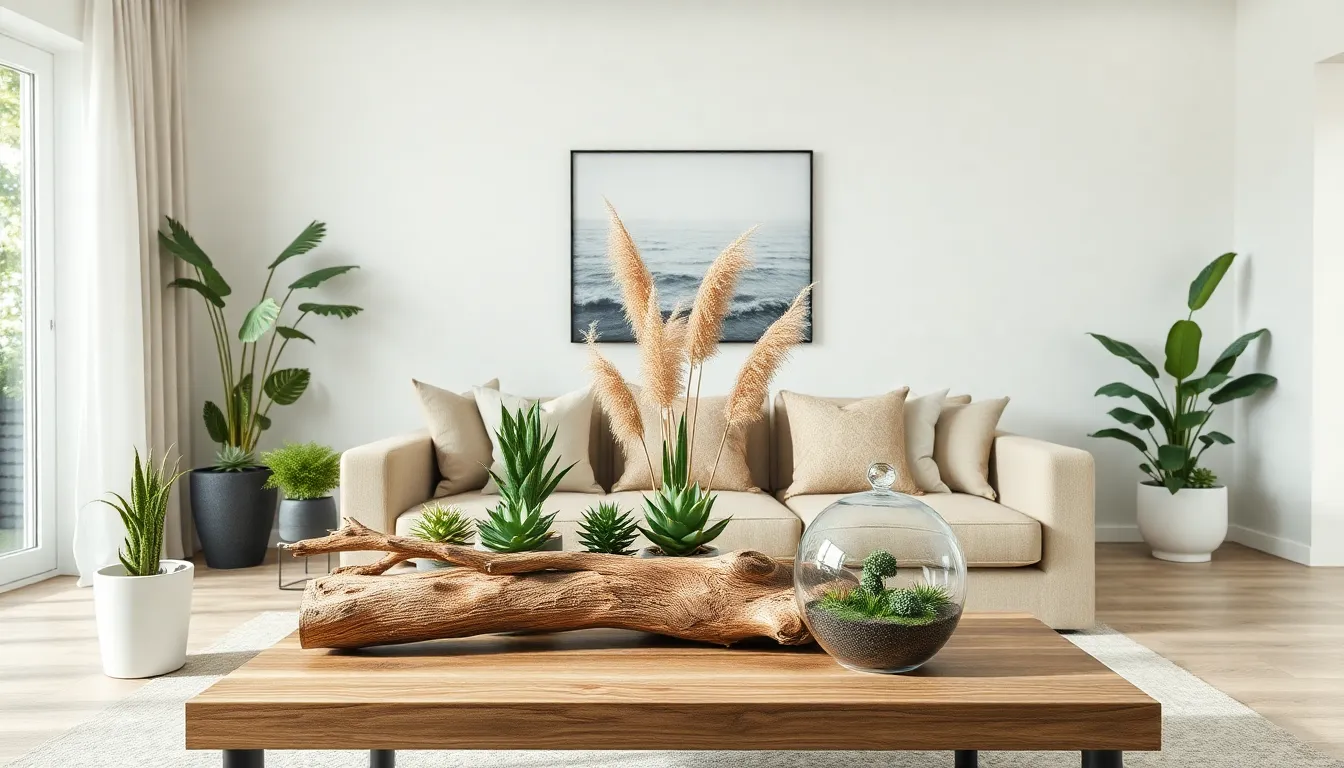
Adding living elements to your neutral living room creates an organic connection between indoor comfort and natural beauty. These fresh additions breathe life into subtle color palettes while maintaining the serene atmosphere you’ve carefully cultivated.
Select Low-Maintenance Green Plants
Succulents offer the perfect starting point for neutral living rooms because they require minimal watering and thrive in various lighting conditions. These hardy plants complement beige and gray color schemes while adding subtle pops of natural green that won’t overpower your carefully chosen palette.
Air plants provide sculptural beauty without the need for soil or frequent watering, making them ideal for busy homeowners. Display them in glass terrariums or mounted on driftwood to create living art pieces that enhance your room’s natural materials.
Snake plants and ZZ plants excel in low light conditions commonly found in living spaces, growing slowly and requiring water only every few weeks. Their architectural leaves add vertical interest to neutral furniture arrangements while maintaining the sophisticated ambiance you’ve established.
Use Natural Branches and Dried Florals
Natural branches serve as stunning centerpieces when arranged in tall neutral vases, bringing rustic charm to polished living spaces. Choose branches with interesting textures like birch or eucalyptus to complement your wood and stone elements.
Dried pampas grass creates dramatic height and adds movement to static furniture groupings, particularly effective when placed behind sofas or in corners. Its neutral tones blend seamlessly with cream and taupe color schemes while providing the organic texture that prevents spaces from feeling sterile.
Dried flowers in muted tones like wheat colored hydrangeas or dusty miller maintain the sophisticated atmosphere while introducing natural patterns. Arrange them in ceramic or stone vessels that echo your existing natural materials for a cohesive look.
Create Mini Indoor Gardens
Herb gardens on coffee tables or side tables bring both fragrance and functionality to your neutral living space, allowing you to incorporate living elements that serve multiple purposes. Basil, rosemary, and thyme thrive indoors while adding subtle green accents to your neutral foundation.
Terrariums showcase miniature landscapes that echo the natural materials you’ve layered throughout your room, creating focal points that draw the eye without disrupting your color harmony. Glass containers allow you to see the layered soils and stones, adding visual depth to your neutral palette.
Window box planters filled with succulents maximize natural light exposure while creating living artwork along your windows, improving the connection between indoor and outdoor spaces that natural elements provide.
Style with Minimal Neutral Accessories
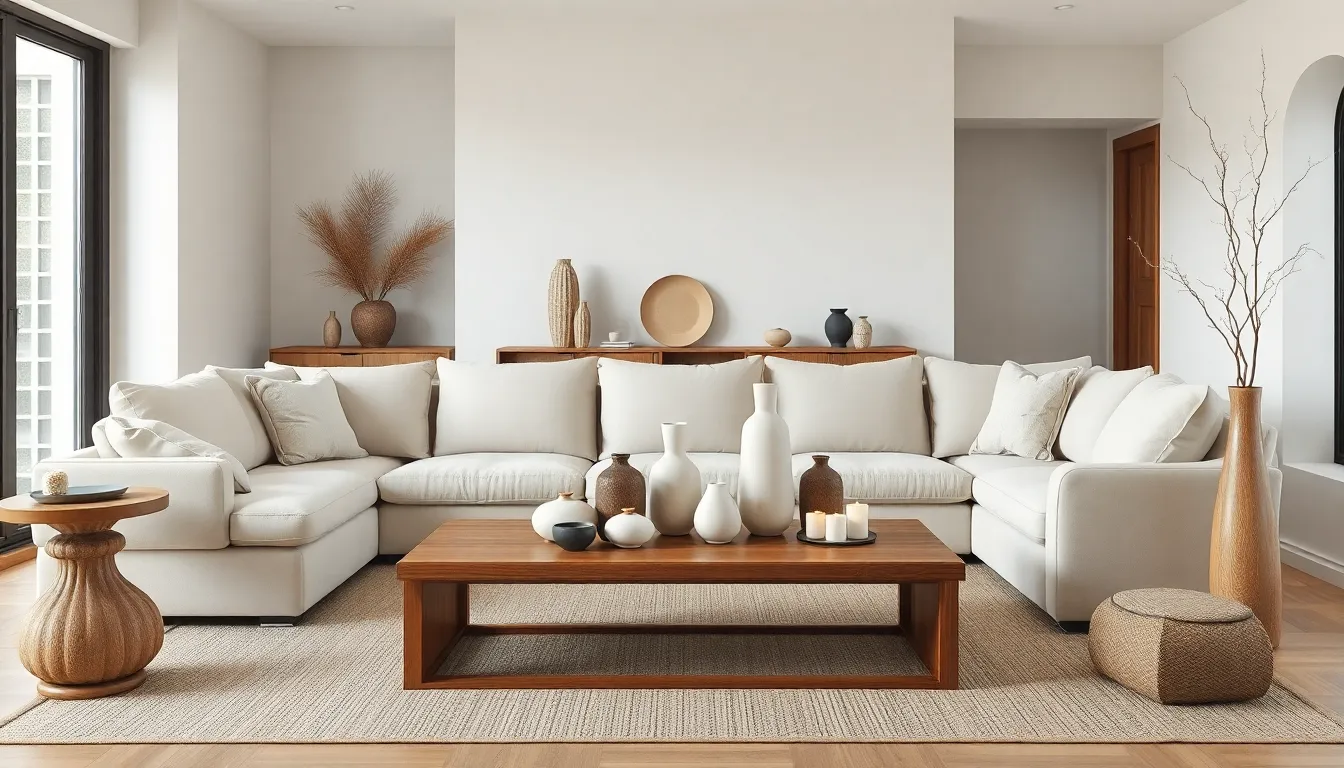
We believe the art of neutral living room design lies in selecting fewer, more impactful pieces that speak to both quality and intentional placement.
Choose Quality Over Quantity
Investment pieces make the difference when we’re creating a sophisticated neutral living room. We should focus on acquiring high-quality furniture that provides both comfort and elegance, such as a large sectional sofa crafted from soft materials like linen or suede. Quality sofas in neutral tones serve as the foundation for our entire space, offering versatility that adapts to changing decor preferences over time.
Limiting our decorative items creates a clean and uncluttered aesthetic that allows each piece to shine. We recommend selecting statement accessories that serve multiple purposes, like a beautifully crafted wooden bowl that can hold keys or display seasonal fruits. Natural materials such as wood and stone elevate our neutral palette while mixed metal accents add sophisticated depth to the overall design.
Durability becomes crucial when we’re investing in fewer pieces that need to work harder in our living space. We should prioritize furniture and accessories that can withstand daily use while maintaining their beauty, ensuring our neutral living room remains timeless and functional for years to come.
Group Items in Odd Numbers
Arranging decorative elements in groups of three or five creates visually appealing vignettes that draw the eye naturally across our neutral living room. We can display ceramic vases, sculptural objects, or candles in odd-numbered clusters on coffee tables, mantels, or floating shelves to achieve this balanced asymmetry.
Varying the heights within these groupings adds ever-changing visual interest while maintaining the calming neutral aesthetic. We might pair a tall cylindrical vase with a medium-sized round bowl and a small decorative sphere, all in complementary neutral tones like cream, taupe, and soft gray.
Strategic placement of these odd-numbered arrangements throughout our living space creates rhythm and flow. We should distribute these groupings across different surfaces and levels, ensuring each cluster contributes to the overall harmony while avoiding a cluttered appearance that could disrupt our serene neutral environment.
Mix Heights and Shapes for Balance
Combining different vertical elements creates the visual tension that prevents our neutral living room from feeling flat or monotonous. We can pair low coffee tables with tall floor vases, or position sleek table lamps alongside chunky ceramic sculptures to achieve this essential height variation.
Contrasting geometric shapes adds sophisticated interest to our neutral palette without introducing competing colors. We recommend mixing round ottomans with square coffee tables, or pairing rectangular artwork with circular mirrors to create pleasing geometric relationships throughout the space.
Incorporating organic shapes alongside structured forms brings natural balance to our neutral living room design. We can add curved ceramic bowls, irregularly shaped stones, or sculptural plants to soften the angular lines of furniture and architectural elements, creating a harmonious blend that feels both intentional and effortless.
Conclusion
Creating a stunning neutral living room doesn’t require sacrificing personality or warmth. By thoughtfully combining textures materials and subtle patterns we can create spaces that feel both sophisticated and inviting.
The key lies in layering different elements while maintaining balance. From natural wood accents to carefully placed lighting each component works together to create visual depth and interest.
We’ve shown that neutral doesn’t mean boring – it means timeless. With these strategies you’ll have a living room that serves as the perfect backdrop for both quiet evenings and entertaining guests while remaining effortlessly elegant for years to come.
Frequently Asked Questions
What makes neutral living rooms appealing?
Neutral living rooms provide a timeless and elegant foundation for home decor. They create serene retreats with understated color schemes that achieve a cozy yet chic atmosphere. Far from being boring, neutral palettes can be strategically layered with various textures, tones, and materials to create depth and visual interest while maintaining sophistication.
How do I choose the right neutral color palette?
Start with warm whites and creams to create a welcoming atmosphere, then use soft grays and beiges to add depth while maintaining harmony. Follow the 60-30-10 rule for balance, and consider taupe and mushroom tones as deeper accents. Strategic placement of these colors creates focal points and visual hierarchy in your living space.
What textures work best in neutral living rooms?
Mix smooth surfaces like polished wood and glass with rougher textures such as exposed brick and natural stone to create tactile contrast. Add textured area rugs and woven baskets for warmth and visual weight. Combine natural materials like reclaimed wood and wool with modern synthetic elements for sophisticated contrasts.
What furniture should I choose for a neutral living room?
Select classic sofa shapes in neutral colors like beige, white, or gray for versatility. Choose materials such as linen, polyester, and suede for inviting textures and durability. Opt for versatile coffee tables and side tables made from glass, metal, or wood. Natural wood finishes prevent a sterile look and add visual interest.
How can I add warmth to my neutral living room?
Incorporate natural materials like woven baskets and jute rugs for both storage and organic texture. Add wooden accents such as live-edge tables and reclaimed wood shelves for natural beauty and character. Use stone and ceramic elements like stone fireplaces and handcrafted pottery to create focal points and visual depth.
What lighting works best in neutral spaces?
Combine ambient, task, and accent lighting with dimmer switches for adjustable brightness. Maximize natural light by keeping windows unobstructed and using light-colored treatments. Add reflective surfaces like mirrors and glass accents to amplify daylight. Incorporate warm-toned fixtures in bronze and brass to balance cool neutral undertones.
Can I use patterns in a neutral living room?
Yes, use geometric patterns in neutral tones like soft grays and warm beiges to add energy while maintaining calm. Incorporate organic shapes and nature-inspired motifs for a soft touch. Layer patterns of varying scales to create visual harmony and depth while ensuring the overall aesthetic remains cohesive and inviting.
How do I incorporate plants into neutral decor?
Select low-maintenance green plants like succulents and air plants for subtle pops of natural color without overpowering the neutral palette. Use natural branches and dried florals for rustic charm and texture. Consider mini indoor gardens like herb gardens and terrariums to enhance both functionality and aesthetic appeal.
What’s the key to styling neutral accessories?
Focus on quality over quantity in furniture and decor. Select impactful, multifunctional pieces that enhance the overall design while maintaining a clean aesthetic. Group decorative items in odd numbers and vary heights and shapes to create visual interest and balance while keeping the space sophisticated and timeless.

